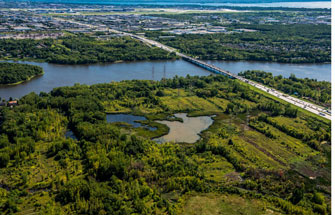 2024 15U Boys Ray Carter Cup ChampionshipsAug 22-25 Laval, Québec
2024 15U Boys Ray Carter Cup ChampionshipsAug 22-25 Laval, QuébecVille de Laval

With a population of over 400,000, Laval is the 3rd largest city in the province. It is also one of the regions in Québec with the highest demographic growth. Nearly 3.5 million people— or nearly half of Québec's population—live within a 40-km radius of Laval.
https://www.laval.ca/Pages/En/home.aspx
A welcoming city
Laval aims to be a welcoming, open city, respectful of all and committed to the inclusion of its citizens in the city's development, as demonstrated by the values embodied in the Laval 2035 vision. The city's various initiatives aim to harmoniously coordinate the actions of its partners to promote the social and cultural inclusion of all Laval residents.
City on the move
Laval balances green spaces, commercial sectors and residential neighborhoods. A city in constant evolution, Laval is dynamic, located at the crossroads of major highways. With its strategic geographic position and extensive public transit network, the region is an easily accessible destination and a hub between Montreal and the Laurentians.
Thanks to its college and university buildings, Laval is one of those Quebec cities that offer a complete education system. Its educational, recreational, transportation and health infrastructures are constantly adapted to the changing needs of citizens and families.
Laval is definitely a city that strikes the right balance between quality of life and welcoming major development projects.
 Discover Laval in photos on our Instagram account
Discover Laval in photos on our Instagram account
City and administrative region
Laval is both a city and an administrative region.
Regional County Municipalities (RCMs) are administrative entities responsible for the regional management of local communities. As a local municipality with responsibilities assigned to the RCMs, Ville de Laval is responsible for :
French-speaking city
According to the Charter of the French Language, a law defining the linguistic rights of all Quebec citizens, only organizations and establishments recognized under section 29.1 may post signs in a language other than French, with French predominating. The Office québécois de la langue française (OQLF), which ensures compliance with the Charter and its regulations, may, at its request, recognize a municipality as bilingual and thus authorize signage in French and English on its territory, provided that more than half of its residents have English as their mother tongue (the percentages concerning mother tongues for each city in Quebec are determined by the Statistics Canada census).
Ville de Laval is therefore not a "recognized" (bilingual) municipality, since more than half of its residents do not have English as their mother tongue.